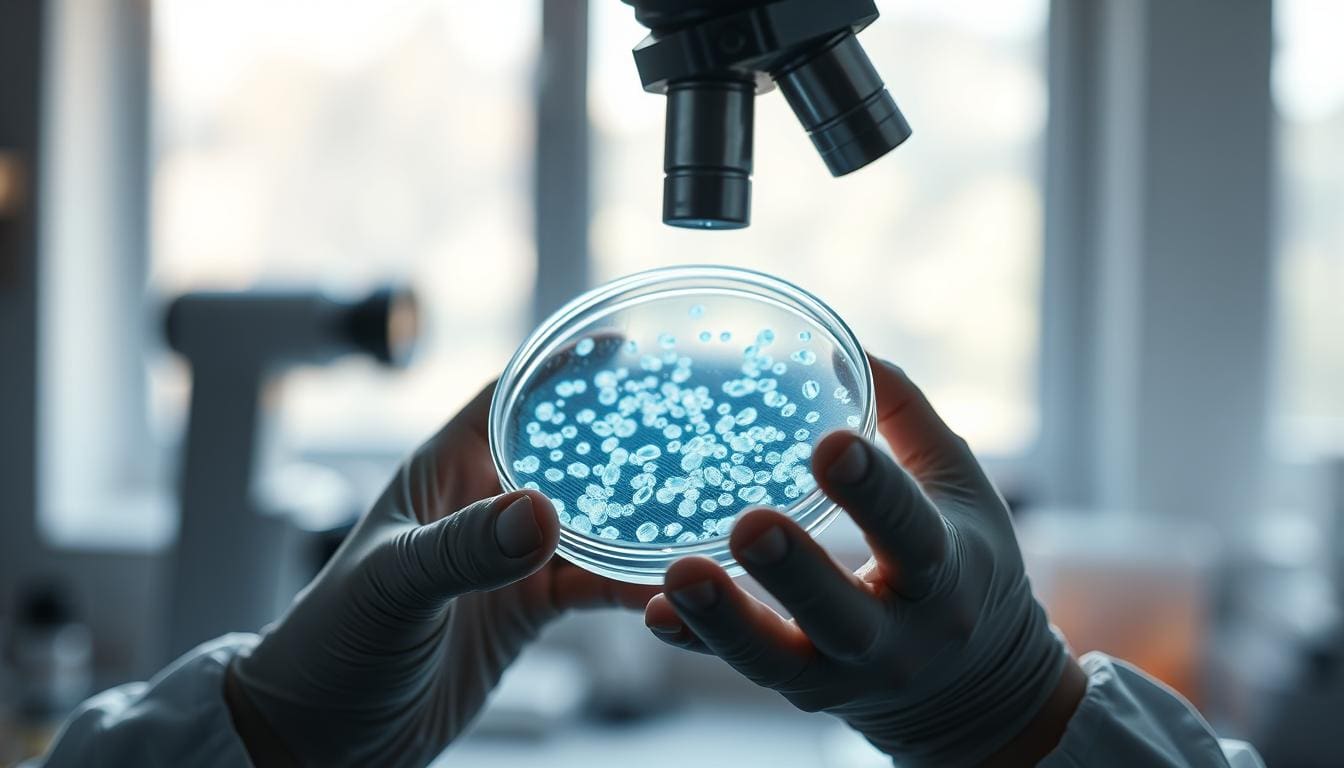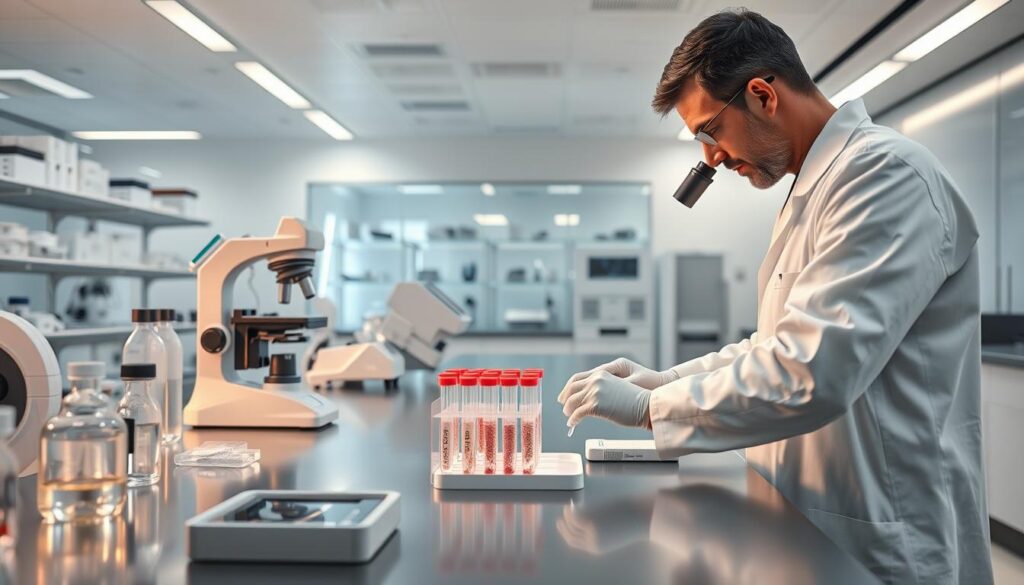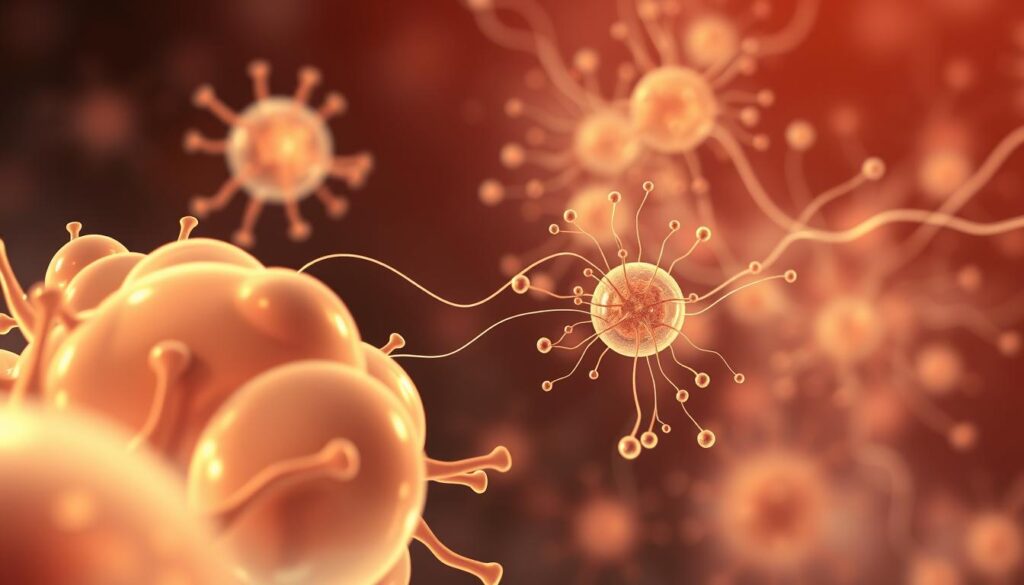
We are on the verge of a major change in regenerative medicine. Groundbreaking advances in growing functional tissue from stem cells are happening. Studies have shown great success in making beating heart tissue and bioengineered lungs. This is changing the future of transplantation.
At Liv Hospital, we aim to give top-notch healthcare with a focus on the patient. Our goal of being the best aligns with the latest in organ creation and regenerative medicine. This brings new hope to those needing transplants.

Stem cell research has been key in regenerative medicine. It has led to new treatments and therapies. Over the years, we’ve seen big changes in healthcare thanks to this field.
The idea of regenerative medicine started in the early 1900s. But it really took off with the discovery of stem cells. Stem cells can turn into different cell types, making them great for fixing and growing tissues.
Stem cell research has had many important moments. The finding of embryonic stem cells in the 1980s and the creation of induced pluripotent stem cells (iPSCs) in 2006 were huge. These discoveries let researchers dive deeper into tissue engineering and regenerative medicine.
“The discovery of induced pluripotent stem cells has revolutionized the field of regenerative medicine, providing a powerful tool for disease modeling and drug discovery.”
Turning stem cell theory into real lab work has been tough but rewarding. Scientists have learned a lot about stem cells and how to make them into specific cells.
Tissue engineering has also made big strides. By mixing stem cells with materials and growth factors, scientists can make real tissue substitutes. This has opened up new ways to treat diseases and injuries.
| Year | Milestone | Significance |
|---|---|---|
| 1981 | Discovery of Embryonic Stem Cells | Enabled the study of pluripotent cells and their possible uses in regenerative medicine. |
| 2006 | Development of Induced Pluripotent Stem Cells (iPSCs) | Offered a way to make pluripotent cells from adult tissues, solving ethical issues with embryonic stem cells. |
| 2010s | Advancements in Tissue Engineering | Helped make real tissue substitutes for different organs, making them ready for use in patients. |

The science of growing organs from stem cells is fascinating. It’s based on stem cells’ unique abilities. These cells can turn into different types of cells, which is key for fixing damaged tissues.
We’re seeing big steps forward in this area. This is thanks to new research and tech.
Stem cells can grow themselves and become different types of cells. This makes them very useful for medical research and treatments. Stem cell therapy could help fix many diseases by fixing or replacing damaged tissues.
To turn stem cells into organ tissue, we guide them through different stages. We use special signals and environments to help them become specific tissues. Key technologies enabling organ development include advanced materials and bioreactors that help grow complex tissues.
It’s important to understand and control how stem cells differentiate. This is key to making functional organ tissues for transplants or testing drugs. Our work aims to improve these processes to create high-quality tissues.
A major breakthrough in regenerative medicine has been achieved. We’ve created functioning heart tissue from stem cells. This is a big step towards fixing or replacing damaged heart tissue, giving hope to those with heart disease.
We’ve grown beating cardiac cells in the lab, which is a big deal. This shows how stem cells can turn into heart cells that beat like real ones. It’s a big win for heart health and opens up new ways to fix damaged hearts.
Making beating cardiac cells is a complex process. First, we get stem cells, which can become many types of cells. Then, we make them into cardiac cells that can beat like real heart cells. This differentiation process needs careful control over many steps.
Our research shows these lab-grown cells act like real heart cells. They beat in sync, which is key for a healthy heart. Getting this right in a lab is a big achievement.
This breakthrough is huge for treating heart disease. Heart disease is a big killer worldwide, and current treatments just manage symptoms. Now, we can think about fixing the heart itself.
With stem cell therapy, we can repair or replace damaged heart tissue. This could mean transplanting these cells into damaged hearts. It could greatly improve heart function and save lives.
This breakthrough also means we can do better disease modeling and drug testing. By studying heart tissue in a lab, we can learn more about diseases. This helps us find new treatments.
Recent breakthroughs in lung tissue engineering are changing regenerative medicine. We’re seeing big steps forward in making complex respiratory structures. This is key for creating working lung tissue for transplants.
Creating the lung’s detailed structure is a big challenge. It needs the right arrangement of different cell types. Thanks to stem cells, scientists are making lung tissue that looks and works like the real thing. They’re making airways, alveoli, and blood vessels for gas exchange.
Using stem cell research, scientists can turn stem cells into lung cells. This means they can make functional lung tissue. This could change how we treat lung diseases like COPD and cystic fibrosis.
Engineered lung tissue has passed tests in animal models. Studies show it can work with the host’s tissue, improving lung function. These results are exciting for future human trials.
As we improve tissue engineering, we’re getting closer to real lung tissue for patients. The progress in lung tissue engineering shows the power of regenerative medicine. It could help solve some of the toughest medical problems.
Liver organoids are a big deal in medical research. We’ve made great strides in making liver organoids that work like the real thing. They can even detoxify like the liver does. This is huge for testing drugs and studying diseases.
The liver is key in cleaning our bodies. Our liver organoids do the same thing. They get rid of toxins just like the liver does. This helps us understand how the liver reacts to different things.
Liver organoids are changing how we test drugs. We can check how well drugs work and if they’re safe on these organoids. This means we don’t need to use animals as much and can find new treatments faster. They also help us study liver diseases and test treatments in a safe way.
Creating working liver organoids is a big win for bioengineering. As we keep improving, liver organoids will help us learn more and help patients more too.
Stem cell therapy is showing great promise for fixing cartilage and treating joint problems. Scientists have made big steps forward. They are now able to rebuild cartilage’s structure.
Stem cell therapy is a new way to fix joint issues by growing new cartilage. It uses stem cells to turn into cartilage cells. This fixes damaged cartilage. It can help with many problems, like osteoarthritis and injuries.
Key benefits of stem cell therapy for cartilage regeneration include:
Getting cartilage to work right is key for these new treatments. Scientists have found ways to make new cartilage that lasts. This makes the new cartilage strong and helps it blend with the rest of the tissue.
We keep working on making these cartilage fixes even better. Our goal is to change how we treat joint problems. As we learn more, we hope to find even better ways to help patients.
The creation of organs tailored for each patient is a big step in regenerative medicine. This innovation could change organ transplants by giving patients organs that fit their needs perfectly.
Creating organs for each patient is made possible by reprogramming cells. Stem cell therapy is a key method, making organs that match the patient’s body. “The use of stem cells to generate patient-specific organs is a groundbreaking development in the field of regenerative medicine,” it allows for tailored treatments.
Patient-specific organs greatly lower the chance of organ rejection. Because these organs come from the patient’s own cells, the risk of an immune reaction is much lower. This breakthrough is set to make organ transplants safer and more successful for those in need.
As regenerative medicine keeps growing, the impact of patient-specific organs on healthcare is clear. It offers personalized treatments and lowers rejection risks. This breakthrough is expected to have a lasting effect on the medical field.
Synthetic organ frameworks are a big step forward in regenerative medicine. They change how we make organs for transplants. This is thanks to new materials and advanced bioengineering.
Creating biocompatible scaffolds is key for synthetic organs. These scaffolds help organs grow by giving them a structure. They also help cells grow and work together as tissue.
Researchers have made great strides in making these scaffolds. They are strong and help cells grow well.
The benefits of using these scaffolds are many:
Mixing artificial and biological parts is important for synthetic organs. This mix helps create organs that work like real ones. It uses new materials and bioengineering to make sure everything works together well.
But, there are big challenges. Like keeping the scaffold stable for a long time. Also, making sure the organ gets enough blood and works right. Solving these problems is key to making synthetic organs work.
Creating blood vessels in lab-grown organs is a big challenge. It’s key for organs to get the nutrients and oxygen they need. Without blood vessels, organs can’t survive.
Scientists have made big progress in making blood vessel networks with stem cells. They turn stem cells into endothelial cells, which line blood vessels. This is a complex process that needs careful control.
By using special growth factors and materials, scientists can create vascular networks like those in real tissues. This breakthrough could change regenerative medicine by making lab-grown organs more complex and functional.
Getting nutrients to complex tissues is a big challenge in making organs. Vascularization solutions help solve this problem. By adding blood vessels to lab-grown tissues, we can make them more viable and functional.
This breakthrough means we can use lab-grown organs for transplants and tissue repair. It also helps in drug testing and disease modeling, pushing personalized medicine forward.
As vascularization technology improves, we’ll see more progress in making transplantable organs. This is a key step towards making lab-grown organs available for patients.
Organ bioengineering has made great strides, but it faces big hurdles. Scalability and regulatory issues are major obstacles. These problems need to be solved before we can use these new treatments in hospitals.
Scaling up organ production is a big challenge. The current methods are slow and not always reliable. To fix this, scientists are working on new ways to make tissues.
Bioreactors are being developed to grow tissues on a bigger scale. They aim to keep tissues healthy and working well.
Getting bioengineered organs into hospitals is also tough. It requires training doctors and nurses to use these new tools.
This shows we need plans for both the tech and the practical side of using these organs.
Rules for organ bioengineering are changing and differ by country. It’s hard to follow these rules while also innovating. For example, the FDA has rules for stem cell treatments, but these rules keep changing.
Working together, researchers, policymakers, and industry leaders can find a way through these rules.
There are also big ethical questions. Where do stem cells come from? Do patients agree to use them? And will everyone have access to these new treatments? We must talk about these issues to make sure everyone benefits.
“The power of regenerative medicine is huge, but we must use it wisely.”
By tackling these problems, we can make organ bioengineering work. This will lead to new treatments that can really help patients.
Looking at the progress in growing organs in labs, we see a big change coming. Regenerative medicine is on the verge of a major leap. Lab-grown organs could change organ transplants, giving hope to many.
Stem cell research has made big strides. Now, we can make working heart and lung tissue, liver bits, and even cartilage. This shows the strength of teamwork and the hard work of scientists.
We must keep funding research to tackle the hurdles ahead. This way, we can fully use lab-grown organs in medicine. With more innovation and support, we’re sure lab-grown organs will soon help patients everywhere.
Regenerative medicine aims to fix or replace damaged tissues and organs. It uses stem cells to grow new organs. This method helps create tissues and organs for transplant or repair.
Stem cells can turn into different cell types. They are used to grow new organs. By guiding them to become specific cells, we can create functional tissues and organs.
Lab-grown organs could change organ transplants. They offer a constant supply of organs. This reduces rejection risks and makes medicine more personal.
Big advances include making working heart and lung tissue. We’ve also made liver organoids and grown cartilage. Plus, we’ve created organs just for one person and made synthetic frameworks for organs.
Harvard Stem Cell Institute (HSCI): HSCI Researchers Achieve Major Breakthrough in Cell Reprogramming
PubMed Central (NCBI): Genomic and Functional Characterization of a Novel Cell Type
Subscribe to our e-newsletter to stay informed about the latest innovations in the world of health and exclusive offers!
WhatsApp us